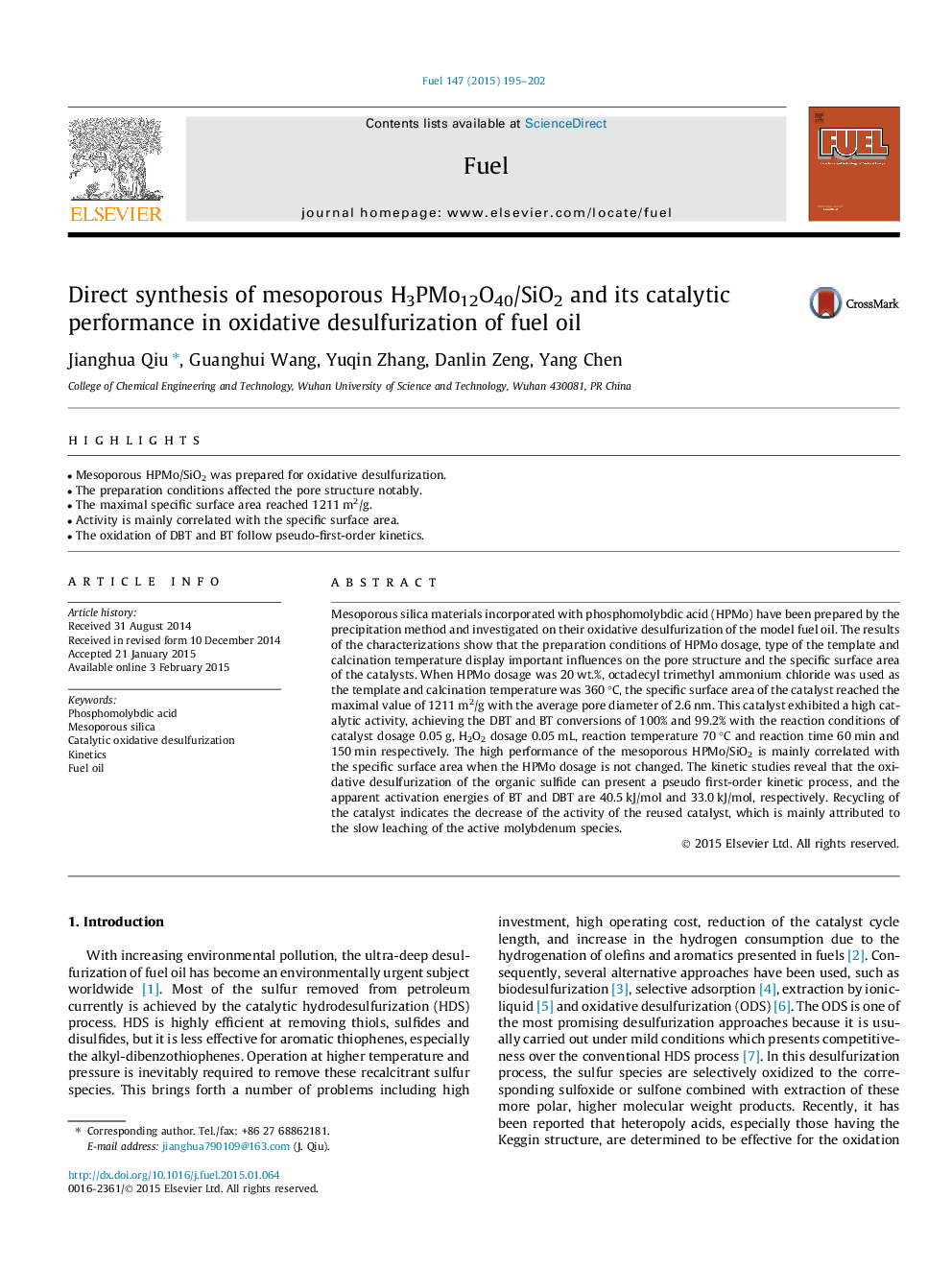| Article ID | Journal | Published Year | Pages | File Type |
|---|---|---|---|---|
| 205959 | Fuel | 2015 | 8 Pages |
•Mesoporous HPMo/SiO2 was prepared for oxidative desulfurization.•The preparation conditions affected the pore structure notably.•The maximal specific surface area reached 1211 m2/g.•Activity is mainly correlated with the specific surface area.•The oxidation of DBT and BT follow pseudo-first-order kinetics.
Mesoporous silica materials incorporated with phosphomolybdic acid (HPMo) have been prepared by the precipitation method and investigated on their oxidative desulfurization of the model fuel oil. The results of the characterizations show that the preparation conditions of HPMo dosage, type of the template and calcination temperature display important influences on the pore structure and the specific surface area of the catalysts. When HPMo dosage was 20 wt.%, octadecyl trimethyl ammonium chloride was used as the template and calcination temperature was 360 °C, the specific surface area of the catalyst reached the maximal value of 1211 m2/g with the average pore diameter of 2.6 nm. This catalyst exhibited a high catalytic activity, achieving the DBT and BT conversions of 100% and 99.2% with the reaction conditions of catalyst dosage 0.05 g, H2O2 dosage 0.05 mL, reaction temperature 70 °C and reaction time 60 min and 150 min respectively. The high performance of the mesoporous HPMo/SiO2 is mainly correlated with the specific surface area when the HPMo dosage is not changed. The kinetic studies reveal that the oxidative desulfurization of the organic sulfide can present a pseudo first-order kinetic process, and the apparent activation energies of BT and DBT are 40.5 kJ/mol and 33.0 kJ/mol, respectively. Recycling of the catalyst indicates the decrease of the activity of the reused catalyst, which is mainly attributed to the slow leaching of the active molybdenum species.
